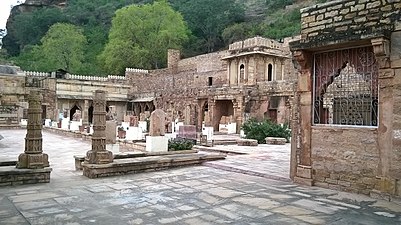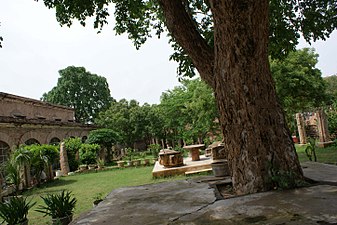Gujari Mahal Archaeological Museum


The Gujari Mahal Archeological Museum or State Archaeological Museum, sometimes called the "Gwalior Fort Museum", is a state museum in Gwalior, located in the fortress of Gujari Mahal.[1] It displays numerous artifacts of the region, including a fragment of the Garuda capital of the Heliodorus pillar from Vidisha.[2]
The palace of Gujari Mahal was built by Raja Man Singh Tomar for his wife Mrignayani, a Gujar princess. She demanded a separate palace for herself with a regular water supply through an aqueduct from the nearby Rai River.[citation needed] The palace has been converted into an archaeological museum. Rare artifacts at the museum include Hindu and Jain sculptures dated to the 1st and 2nd centuries BCE, miniature statue of Salabhanjika, terracotta items and replicas of frescoes seen in the Bagh Caves.
| Artifacts at the Gujari Mahal Archaeological Museum |
|
References[]
| Wikimedia Commons has media related to Gwalior Fort Archeologic Museum. |
- ^ Official website for tourism in the Madhya-Pradesh region
- ^ Buddhist Landscapes in Central India: Sanchi Hill and Archaeologies of Religious and Social Change, C. Third Century BC to Fifth Century AD, Julia Shaw, Left Coast Press, 2013, p.89
Coordinates: 26°14′02″N 78°10′12″E / 26.234°N 78.170°E
- Museums in Madhya Pradesh
- Buildings and structures in Gwalior
- Education in Gwalior
- Archaeological museums in India
- Tourist attractions in Gwalior
- Rajput architecture
- Indian museum stubs




